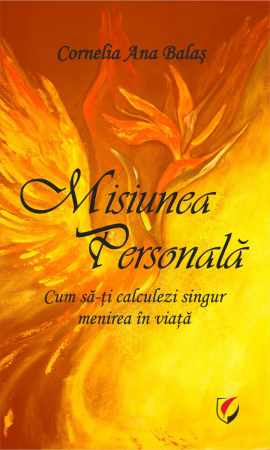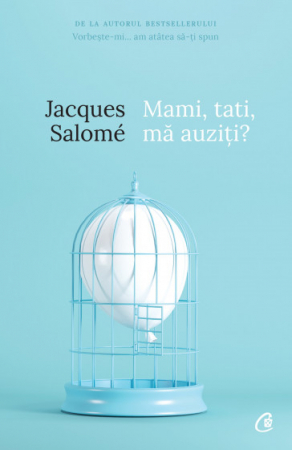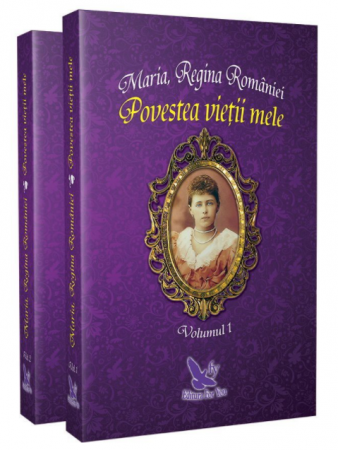ISBN: 978-606-28-1022-1
DOI: 10.5682/9786062810221
Publisher year: 2019
Edition: I
Pages: 254
Publisher: Editura Universitară
Author: Bogdan Soltuzu
- Description
- Download (1)
- Authors
- Content
- More details
- Reviews (0)
The illustrious doctors and naturalists of the time observed since antiquity the therapeutic valences of roses, highlighting in their works their ability to treat a wide range of both physical and mental ailments. Today, modern biochemistry and pharmacognosy studies scientifically confirm the therapeutic properties of these plants, thus creating the premises for new treatment possibilities. Thanks to a plethora of bioactive compounds such as: polyphenols, vitamins, carotenoids and organic acids, roses have a multitude of pharmacological actions, including: antioxidant, anti-inflammatory, antitumor, neuroprotective, antidepressant and antistress, antiulcerogenic and hypoglycemic. and detoxifying, nephroprotective and antilithiasis, antiviral and antibacterial, regenerating and anti-aging.
Thus, in light of these recent studies, I wanted to bring to the attention of specialists in the field, as well as the general public, the curative valences of different species of roses, along with specific therapeutic and dietary indications in various types of diseases. .
The Author
-
TRANDAFIRUL. VALENTE DIETETICE SI TERAPEUTICE
Download
FOREWORD / 9
ROSE IN MYTHOLOGY AND SPIRITUALITY / 13
ROSE IN MYTHOLOGY / 13
ROSE, HERMETISM, MASONRY AND MYSTERIES / 16
THE ROSE IN RELIGIOUS SYMBOLS / 24
THE ROSE, SYMBOL OF LOVE AND HERALDIC SYMBOL / 28
THE HISTORY OF THE ROSE IN THE EAST AND THE WEST / 31
TAXONOMY, MORPHO-ANATOMY, ECOLOGY AND REPRODUCTION / 41
SYSTEMATIC FRAMEWORK / 41
MORPHOLOGY AND ANATOMY / 51
AREA OF SPREAD / 64
ECOLOGY / 66
MULTIPLICATION / 67
BOTANICAL DESCRIPTION OF SOME SPECIES OF MEDICAL INTEREST OF THE GENUS ROSA L. FROM ROMANIA / 75
PHYTOCHEMISTRY, PHARMACOGNOSIS AND PHYTOTHERAPY / 85
HARVESTING METHODS / 85
BIOCHEMICAL ANALYSIS / 88
Qualitative biochemical analyzes / 88
Quantitative biochemical analyzes / 96
PHARMACO-TOXICOLOGICAL ACTIVITY / 106
Experimental drug-toxicology / 106
Antioxidant action / 106
Anti - inflammatory and analgesic action / 109
Antitumor action / 112
Neuroprotective and anticonvulsant action / 115
Antidepressant, relaxing and aphrodisiac action / 117
Anti-aging and regenerating action / 118
Antiulcerogenic action / 121
Antidiarrheal action / 122
Antimicrobial action / 123
Hypoglycemic action / 129
Lipid-lowering action / 130
Nephroprotective and antilithiasic action / 132
Hepatoprotective action / 134
Toxicity / 136
Clinical drug-toxicology / 138
In cardiovascular diseases / 138
In preventing and combating obesity / 140
In osteoarthritis and rheumatoid arthritis / 141
In the prevention of diabetes / 144
In pain relief / 145
In depression, anxiety and combating stress / 147
In skin regeneration and hydration / 148
In eye diseases / 150
Side effects and safety / 151
Contraindications / 151
Drug interactions / 152
Interactions with other medicinal plants and food supplements / 152
Food interactions / 152
ROSES IN TRADITIONAL AND MODERN PHYTOTHERAPY / 153
Practices in traditional medicine / 153
Roses in ancient and medieval European medicine / 153
Roses in traditional Arabic medicine / 161
Roses in Ayurvedic medicine / 163
Roses in traditional Chinese medicine / 167
Phytopharmaceutical forms for internal use / 169
1. Fresh or canned rosehips / 169
2. Powder / 170
3. Aqueous extractive solutions / 173
4. Hydro-alcoholic extractive solutions / 181
5. Glycerin-hydro-alcoholic extractive solutions / 186
6. Tablets / 187
Phytopharmaceutical forms for external use / 188
1. Ointment / 188
2. Medicinal oils / 189
3. Poultices / 192
4. Aromatic vinegars / 192
5. Gargling / 193
6. Badijonari / 194
7. Aromatherapy / 195
8. Phytocosmetics / 198
Medicinal and dietary gastronomy / 208
1. Recipes / 208
2. Beverage recipes / 219
CONCLUSIONS / 225
BIBLIOGRAPHY / 227
Throughout human history, the rose has been a symbol of beauty, love, elegance and refinement. Loaded with this special symbolism, the rose has influenced cultures and civilizations for thousands of years from an aesthetic, economic and even religious point of view.
The oldest historical evidence of rose cultivation and use dates back to the 16th century BC and is found on the frescoes of the Palace of Minos in Knossos (Crete). According to the latest studies, it is believed that the name of the island of Rhodes comes from the Greek rhodon (rose). Proof of this is the rose engravings on the coins of the island of Rhodes over 4000 years old.
Mesopotamian cuneiform writings indicate that the rose has been known for more than 5,000 years. On a clay tablet from that time it is mentioned that the rose was brought by the Akkadian king Sargon from the enemy territories following his expeditions across the Tigris River.
In ancient Egypt, the rose is believed to have magical powers and is often associated with the goddess of magic and the life of Isis. Archaeological studies have revealed fragments of roses in the tombs of the pharaohs or even in their mummified bodies, symbolizing the bridge to the afterlife and the rebirth.
The rose water and the recipe for its preparation was mentioned on the Assyrian tablets over 4000 years old. Between the 17th and 12th centuries BC, the Anatolians managed to make the first "medicines" in history using fresh rose petals, beaten and rubbed with sugar, which were then shaped in the palm to be swallowed more easily.
In traditional Ayurvedic medicine, roses were mainly used to prepare heart tonics or to stop external or internal bleeding. Rose oil was used for dermatological conditions and to hide the unpleasant odor of bad smelling ointments.
The philosopher Confucius wrote in one of his works from the 4th-5th century BC about the significance of roses in the Chinese Empire during the Zhou dynasty. According to these writings, roses were highly prized by the emperor, the gardens of his castle being full of roses and the royal libraries contained over 600 volumes dedicated to the cultivation and use of the rose.
The Romanian naturalist Pliny the Elder described around 50 AD the properties of roses, stating that they have a slightly astringent taste and are indicated to treat gastric, gynecological, stomatitis, gingivitis and tonsillitis. He also recommends flowers mixed with vinegar to stop bleeding, seeds to soothe toothache and perfume to clear the mind.
Dioscorides, in his works from the second half of the century. I AD, also described the therapeutic effects of roses, mentioning that they can treat eye diseases, headaches, ear diseases, gingivitis and various gynecological diseases. He also mentions for the first time about the use of powder obtained from dried rose petals.
According to a medical treatise translated from the Syriac language from the 15th century. IV d.Hr. Roses were used both for external use to treat eye and dermatological conditions or internally for gastric, liver or bronchopulmonary diseases.
In early medieval Europe, roses were cultivated by monks in the gardens of monasteries, especially for their therapeutic effects. The medieval botanist John Gerard described in his works from the second half of the century. XVI over 18 species of roses together with their healing properties. Similarly, roses are mentioned in the works of botanist Nicholas Culpeper who recommends powders obtained from white or red rose petals dissolved in wine.
In addition to their therapeutic properties, roses were an inexhaustible source of inspiration for contemporary artists in creating grandiose works of art or for kings and emperors who, in their desire to show their opulence, decorated their gardens with their beauty and fragrance. . Roses inspired ancient legends, wrote pages of history, influenced religion, art, the occult and secret societies, and were among the oldest ingredients used in cosmetics.
Although their therapeutic properties have been studied and recorded for thousands of years in ancient traditional medical treatises, roses have now lost their therapeutic significance due to the growing interest of modern society in drugs and cosmetics based on synthetic chemicals. However, modern biochemistry and pharmacognosy studies performed on different species of roses bring a series of scientific evidence that confirms the therapeutic valences of these plants, thus opening new possibilities and treatment alternatives.
Starting from these considerations, I wanted to bring to the attention of specialists in the field, as well as to the general public, the healing values of different species of roses, along with specific therapeutic and dietary indications in various types of diseases.
Prof. dr. Bogdan Soltuzu

6359.png)
![Rose. Dietary and Therapeutic Values - Bogdan Soltuzu [1] Rose. Dietary and Therapeutic Values - Bogdan Soltuzu [1]](https://gomagcdn.ro/domains/editurauniversitara.ro/files/product/large/trandafirul-valente-dietetice-si-terapeutice-67-175171.jpg)














